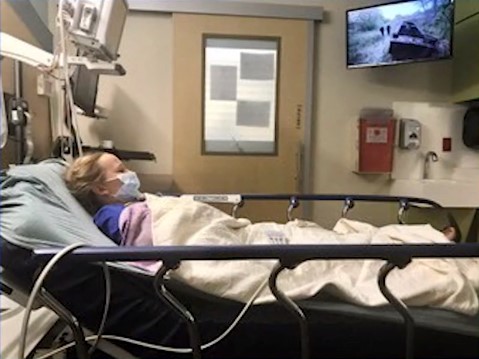Arachnoid Cysts in Children
How do children get an arachnoid cyst?
About 3% of children in the United States have an arachnoid cyst, which is a pocket of cerebrospinal fluid surrounded by a thin membrane in the brain or spinal cord. In most cases, these little sacs of fluid never cause any problems and don’t require treatment. Doctors often discover these benign cysts incidentally when they examine a child after a head injury. It is possible for a pediatric arachnoid cyst to grow and cause symptoms. In those cases, surgery may be recommended, and outcomes are typically excellent.
Causes of pediatric arachnoid cysts
In most cases, the cause of a pediatric arachnoid cyst is unknown. Congenital arachnoid cysts are the most common form and are thought to be the result of abnormal brain development during early pregnancy. They are often detected on the ultrasound and tend not to grow after birth. Boys are at least three times more likely than girls to be born with an arachnoid cyst. Secondary arachnoid cysts occur after birth. Doctors think these cysts may form after a tear or split in the membrane that surrounds the brain and spinal cord. These may be the result of a head injury or an infection, such as meningitis.
Signs of pediatric arachnoid cysts
Arachnoid cysts often do not cause any symptoms. In these cases, your doctor may recommend monitoring them. A large cyst could cause a child’s head circumference to expand at an abnormal rate. The most common symptoms that could occur are headaches and intracranial pressure. Children may also suffer seizures, nausea, vomiting, hearing or vision problems, and balance difficulties. Pain or tingling in the arms or legs might be noticed if the cyst is pressing on a spinal cord or nerve root. A large cyst may cause hydrocephalus, or fluid build-up in the brain, which could increase pressure in the skull. Because the cyst is in an area with blood vessels, it could begin to bleed after a head trauma, which could cause sudden and severe pain.
Diagnosis
Arachnoid cysts are diagnosed through neuroimaging, such as a CT or MRI scan. These are painless and noninvasive procedures. These imaging studies show a collection of fluid surrounded by a membrane. If the cyst is discovered during pregnancy, a prenatal MRI may be conducted and genetic counseling may be recommended if any abnormalities are detected.

9-year-old Idaho girl undergoes life-changing surgery in Houston – Tobin Hoagland’s parents made the tough decision to drive her across the country to get the medical attention she needed during the height of COVID-19.
Treatment
Most arachnoid cysts require no intervention. Follow-up imaging may be ordered to monitor the cyst’s growth. There is no reliable way to predict whether a cyst will expand over time. A doctor may recommend that a child with certain cysts avoid contact sports and take extra care to avoid head trauma.
Surgery may be needed when the child’s cyst is growing or symptomatic. A neurosurgeon may recommend shunting the cyst to drain fluid from the brain. This technique may be needed with a large cyst, but the technique tends to have a higher complication rate. When possible, a surgeon would opt to perform a minimally invasive endoscopic cyst fenestration.
In this short, safe procedure, the cyst is opened and drained using an endoscope, a tiny tube with a camera. This option, which uses a small incision, allows for faster recovery with less scarring. When this is not possible because of the size and the location of the cyst, a surgeon may consider open fenestration, which requires cutting the skull bone. Follow-up MRIs will be ordered to track the patient’s recovery.
What You Can Expect at UTHealth Houston Neurosciences
Our dedicated team uses advanced technology to accurately diagnose and treat pediatric arachnoid cysts. We work in multidisciplinary teams of specialists and pediatric neurosurgeons who share insights, leading to better treatment decision-making and outcomes, as well as lower costs and time savings. Throughout treatment, we will work closely with the doctor who referred your family to ensure a smooth transition back to your child’s regular care. While your family is with us, they will receive expert care, excellent communication, and genuine compassion.
Contact Us
At UTHealth Houston Neurosciences, we offer patients access to specialized neurological care at clinics across the greater Houston area. To ask us a question, schedule an appointment, or learn more about us, please call (713) 486-8000, or click below to send us a message. In the event of an emergency, call 911 or go to the nearest Emergency Room.











